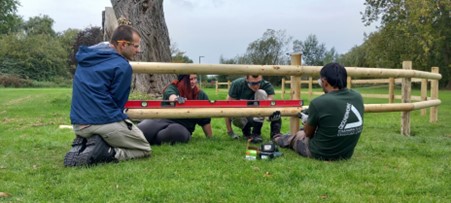
Trees have vital parts to play in ecosystems, even after they stop thriving! There are many benefits to standing deadwood (the rarest type of deadwood) – these can range from benefits regarding the ecosystem’s recycling of nutrients to the network of invertebrates burrowing within the decay.
Although they may not look as aesthetically pleasing as living trees, they can be just as important. By conserving these dying trees, we will enable the following to happen:
-
Nesting and roosting birds and bats - standing deadwood is vital for many species of birds and bats within the UK. The tree carcass is a perfect shelter for all winged animals to take refuge. It is thought that approximately 30% of European woodland residing birds use standing deadwood to roost/nest.
-
Invertebrates (mainly saproxylic beetles) love to use the decaying tree as a habitat. The softened wood is easily malleable, allowing less energy to be spent in constructing burrows and tunnels. Many invertebrates will also consume the deadwood – an important food resource. Approximately 650 species of British invertebrates require deadwood to accommodate part of their life cycle.
-
If wood is not allowed to decay in the ecosystem, the ecosystem cycle is stripped of any organic nutrients it would otherwise regain. New trees and plants often use these vital nutrients to grow in the same area, preventing much-needed vegetation regeneration.